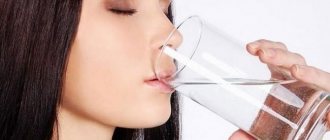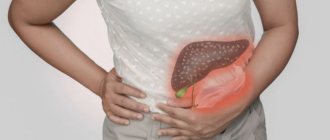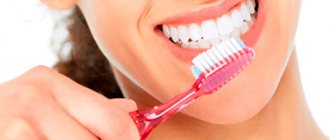An oral burn is damage to the oral mucosa through exposure to high temperature, chemicals, electrical or light radiation. This condition is extremely painful, as there are a large number of nerve endings in the mouth. The mucous tissue becomes swollen and red. Later, the burnt epithelium peels off and painful areas appear.
Treatment for a burn will depend on the extent of tissue damage and the area of spread of the injury. First of all, it will be aimed at neutralizing the cause of the injury and relieving the pain syndrome. Further treatment is aimed at preventing infection of the affected area and speeding up its healing.
Types of oral burns
A burn is a very common injury. Along with the oral cavity, the larynx and esophagus may be affected. There are four main forms of burns:
- Thermal burn. Occurs through contact of the oral cavity with hot liquid or steam.
- Electrical injury. The most common case of such an injury is a violation of the rules for conducting physiotherapeutic procedures.
- Chemical burn. This injury occurs as a result of contact of the oral mucosa with acids, alkalis or chlorine.
- Radiation burn. You can get such a burn during radiation therapy in the complex treatment of malignant neoplasms of the larynx.
How can you get burned by alcohol?
Alcohol is an active chemical that is used both in the home and in medicine. And quite often, if you handle it carelessly, you can get injured.
Most often, alcohol burns are visible on the skin. Such changes can occur in people with fairly delicate and sensitive skin. They can be obtained during the treatment of wounds or when cauterizing acne.
Alcohol tinctures are used to treat various diseases. If such concentrated drugs enter the larynx or esophagus, they cause damage to internal tissues. Lubricating or gargling with saturated alcohol for pharyngitis can cause a burn to the mucous membrane.
Internal tissue injuries can also occur at home as a result of accidental consumption of strong alcohol. In either case, the extent of damage depends largely on the duration of exposure to the chemical and the percentage of the chemical in the solution.
Causes of burns and methods of preventing them
The most common cause of burns is contact of oral tissues with liquids or high-temperature steam. The oral mucosa turns red, swelling appears, and then the upper layer peels off. Electrical burns occur due to incorrect electrophoresis. The size of the lesion will correspond to the size of the electrode.
Chemical burns most often occur in children when trying to test household chemicals, but burns sometimes occur in the dental chair. This can occur upon contact with silver nitrate, solutions for cleaning the dental canal, etc. In case of a chemical burn, the severity of the condition depends on the chemical composition of the substance that has entered the mouth and the strength of its concentration. Ionizing radiation is used in radiation therapy and can also cause burns to the mouth and larynx.
It must be said that the method of preventing burns is basic caution. Drinks or food that are too hot should not reach the table. Steam inhalations for children under 14 years of age are extremely dangerous and do not have any therapeutic effect. As for chemical burns in children, household chemicals must be carefully isolated and have warning labels. Do not pour chemical solutions into other containers, especially drinking bottles.
What folk remedies should I use for a burn with boiling water?
- Tea lotion: brew strong green or black tea, cool it to a temperature of 15°C. Soak a bandage or gauze in the tea leaves and apply to the damaged skin.
- Homemade ointment for burns with boiling water: mix 100 g of spruce resin with the same amount of beeswax and lard, boil and cool. This miraculous ointment will deal with burns very quickly: for shallow skin damage, it is enough to use it only 4 times.
Sources:
- Fundamentals of health development in children. Textbook. — Moscow: Mir, 2016. — 384 p. Tulchinskaya, V.D. Nursing assistance to children / V.D. Tulchinskaya. — Moscow: Russian State University for the Humanities, 2021. — 368 p.
- Andropova T.V., Gudina M.V., Odintsova I.N., Hygiene of children and adolescents, publishing house: Siberian State Medical University Publishing House, 2021 - 101 p.
- Cohen Bernard A. Pediatric dermatology, publishing house: MEDpress-inform, 2015
- Boniface Ernesto, Differential diagnosis in pediatric dermatology, publishing house: Panfilov Publishing House, Binom. Knowledge Laboratory, 2014
Symptoms and classification of burn severity
Treatment and first aid will be carried out depending on the severity of the burn received. There are three degrees of oral burn:
1st degree : the easiest. It manifests itself in the form of moderate pain, tissue redness and sometimes slight swelling. After eliminating the elevated tissue temperature, it goes away on its own and does not require further treatment.
2nd degree: moderate burn severity. Symptoms of the lesion: the appearance of tissue defects, plaque, tissue insensitivity at the site of the lesion. Intense pain requires anesthetics and is often accompanied by an increase in body temperature. If there is a burn not only to the mouth, but also to the larynx, then hospital treatment cannot be avoided.
3rd degree : the most severe. The entire epithelial layer to the deeper layers of the skin is deeply affected. This severity of burns is typical for chemical burns caused by hydrochloric acid and concentrated alkali.
Depth of lesion
To understand how much boiling water can lead to a severe burn, you need to know what kind of burn this can cause, when you need to seek medical help, and what you can take on your own, for this we will determine the degree of burns:
- In the first degree of burn, the damage covers only the superficial layer of the skin, there is redness and slight swelling of the site of contact with boiling water, there is pain, such a burn goes away completely on its own after a few days. This is due to the fact that contact with boiling water was minimal.
- Here the damage already affects not only the epithelium, but also the deep parts of the skin. The first thing that appears is redness and swelling, then blisters form at the site of injury, which is always a painful lesion. It can heal on its own within two weeks if there is no associated bacterial infection.
- With such a burn, the entire layer of skin and underlying tissues are affected. This third type of burn is divided into two degrees. A - degree is characterized by the appearance of thick-walled blisters with the formation of a scab. B - the degree is more severe, when scalded with boiling water, wet tissue necrosis is formed, they begin to die and purulent inflammation of a non-infectious nature and scarring.
- This degree occurs when the skin with a small thickness of the subcutaneous fat layer is exposed to boiling water for a sufficiently long time. With a 4th degree burn with boiling water, you can observe the formation of a black scab and even charring.
Let us note once again that for 1st degree burns, with a small area of damage to the mucous membrane, seeing a doctor is not necessary. But when the second degree appears, especially with infection, contacting a doctor should be without question. The same applies to 3rd and 4th degree burns, which require immediate hospitalization.
Treatment of oral burns
The most important thing in the treatment of burns of the oral cavity will be the provision of timely and high-quality first aid:
- For first-degree burns, rinse your mouth with cool, but not ice-cold, water for 15-20 minutes. If the pain is severe, you can take a painkiller.
- For second degree burns, rinse time with cool water is extended to 30 minutes. After this, the oral cavity is numbed with local anesthetics.
- If you have a third degree burn, you should wait for qualified help. In the complex treatment of such burns, antibiotics, painkillers and therapeutic aerosols are used to restore the epithelium.
In case of a chemical burn, it is important to immediately identify the chemical reagent and neutralize its effect:
- Alkali burns are neutralized by a slightly acidic rinse (citric acid solution);
- An acid burn should be treated with soap or soda solution.
The most important thing when treating burns to the oral cavity is to contact specialists as quickly as possible and provide high-quality first aid to yourself or the victim.
Symptoms
With burns, you can see the following symptoms:
- when swallowing, a sore throat is felt;
- there is always a burning sensation in the throat area;
- you cannot control the secretion of saliva. Sometimes there is too much of it;
- swelling appeared in the oral cavity;
- occasionally vomiting and nausea appear;
- the lymph nodes are significantly enlarged and pain is felt in them;
- Body temperature can rise to 38 - 41 degrees;
- Weakness throughout the body and thirst for sleep;
- There is not enough air to inhale completely.
A cough may also appear, the voice may change, or even lose it.
Preventing burns with alcohol
Chemical burns can occur both at home and in the workplace. To avoid an accident, observe the following precautions.
- Industrial alcohol cannot be used to prepare tinctures;
- the concentrated active ingredient should be stored out of the reach of children;
- Do not use alcohol-based products on hypersensitive skin.
Careful handling and proper storage of chemicals will help not only you, but also those around you to stay healthy.
Alcohol burns are classified as first and second degree injuries. Therefore, there is no particular risk of injury. Treatment for this type of chemical injury involves eliminating pain and repairing damaged tissue. The success of treatment measures depends on the speed and accuracy of providing first aid to the victim.
Alcohol burn: symptoms
Alcohol burns can be internal and external. Damage to various organs has its own specific symptoms.
| Affected organs | Main symptoms |
| Leather | The skin tissue becomes red, blisters form and fill with fluid. The top layer of skin gradually darkens. A hard crust may form at the application site. |
| Esophagus | Sudden onset of severe abdominal pain, difficulty breathing and difficulty swallowing. Weakness and dizziness appear. Burns to the esophagus often lead to loss of consciousness. |
| Organs of vision | The cornea of the eyes turns sharply red, a strong burning sensation and profuse lacrimation appear. Loss of vision, temporary or permanent. Blisters and swelling may also appear on the mucous membrane. |
External alcohol changes are characterized as first degree burns. They do not pose a significant threat to the general health of the victim. Treatment of skin lesions occurs quite quickly. With proper first aid, only pink spots remain on the skin, which will disappear without a trace over time.
Internal organ injuries pose a great threat to human health. These alcohol burns are often symptomatic and require immediate hospitalization.
For an alcohol burn of the mucous membrane of the eye, treatment and further condition of the victim depends on the speed of first aid. Severe vision burns can lead to blindness.
Alcohol burn: possible complications
The healing field leaves virtually no traces on the skin after alcohol burns. Regeneration of the skin field after such an injury occurs quickly. Complications can only arise in special cases:
- the victim has poor wound healing due to diabetes or a weakened immune system;
- infection at the burn site;
- A large area of skin is affected.
If your skin does not improve within three days after an alcohol burn, consult a doctor.
More complex injuries caused by alcohol, such as burns to the esophagus or the mucous membrane of the eye, require long-term treatment. After abdominal burns have healed, long-term dietary treatment is often recommended. Vision loss can occur in eyes damaged by alcohol, which can be restored with treatment. Severe vision burns can lead to blindness.
Timely first aid for alcohol burns will help avoid complications in further treatment. It should be remembered that self-medication of injuries to internal organs or mucous membranes of the eyes can lead to irreversible consequences and cause disability.











